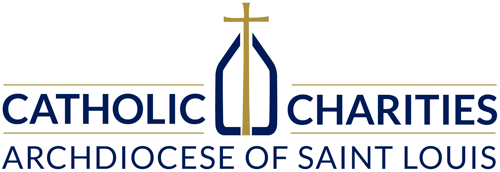How I Survived Displacement and Now Foster At-Risk Youth
Right before Hurricane Katrina hit land, my sister and a few of my adult foster kids all showed up at my house. It was already full with my five daughters – three biological and two foster – so I felt like they were disrespecting my mental health. I told my kids to pack a bag and we decided to drive to Baton Rouge. We were on the road for hours. What normally was an hour and a half drive ended up being 14.
I had just broken up with this guy I was dating. He invited me to his friend’s house, and we ended up sleeping on their floor for two weeks. My mom came with us, after just having a mastectomy and she was still in bandages. We stayed until my sister told me, “You gotta come to St. Louis to get Mama her treatments.” My sister had evacuated there because her sister-in-law lived in Hazelwood. So, we drove to St. Louis, where we ended up with three or four families, about 15 or more people, in a two-bedroom apartment. I was cooking and taking care of stuff for everyone for a while, but there ended up being a conflict. So, I decided to go to a shelter. I packed up my kids and my mom was like, “If Deidre’s leaving, I’m leaving.” And then my niece was like, “Well, if Aunt D is leaving, I’m leaving, too.” My family ended up homeless.
With FEMA’s support, families affected by Hurricane Katrina were routed to St. Patrick Center. My family and I were put up in a hotel, and it was right off of the highway. I had my daughters and niece with me, so I was concerned about sex trafficking. That’s when St. Patrick Center moved us to the Radisson. There were about 100+ displaced families with us, and because I was a school social worker and knew the laws, I found myself helping guide families through the process to access services. In a weird way, it was actually a break for me. I was always so busy, just running, and I finally got a moment of silence in the midst of a storm. St. Patrick Center shared job openings with us, and we were able to shop in their closet for clothes. They had space to type up a resume and would give job leads. After one posting, I ended up getting a job with The Salvation Army as a family therapist for recovering addicts. Here I am broken, too, trying to take care of folks.
When we ended up in St. Louis, there was only one school that could honor my daughters IEP (Individualized Education Plan), so I got connected with the McKinney-Vento liaison. The McKinney-Vento Homeless Assistance Act is a federal law that defines homelessness as children who lack fixed, regular, and adequate nighttime residence. It says that students have the right to enroll where they end up homeless and schools have to give them similar services. That meant ensuring my daughter had a gifted class. I talked to the liaison and she was impressed with how much I knew. The liaison told me, “You would be great at my job!” Well, she ended up leaving her role, and someone called me to say, ‘You know you need to apply!’ And that’s how I ended up with St. Louis (SLPS) Schools overseeing homeless and foster care services for the past 14 years.
As a school social worker, I worked in an impoverished area, so I knew the homeless count was typically much higher than what was documented. We have to be purposeful and deliberate about identifying students who need support. We consistently serve over 5,000 homeless and 300 foster care students. At the start of every school year I conduct McKinney-Vento trainings with all SLPS staff so they can help us identify students who might need services. We have an intake form and, if they complete it, we tell them about support options. When the pandemic hit, it wasn’t so much about the work but knowing what was going on with the students. I lived through homelessness, so I understood when parents lose jobs and can’t afford to feed or buy necessary things, relationships become strained. School closings created isolation for the kids. I couldn’t tell you if they were abused, hungry, or going and it was so disheartening.
At SLPS, I work closely with St. Patrick Center. When St. Patrick Center intakes a family with one of our students, we make sure to partner with them in order to provide our services to that family and ensure the students can remain in school. School is the safest place for some of our students. They receive two meals, shelter, and they even might learn something. My goal is to make sure every student has access to education, no matter their living situation.
